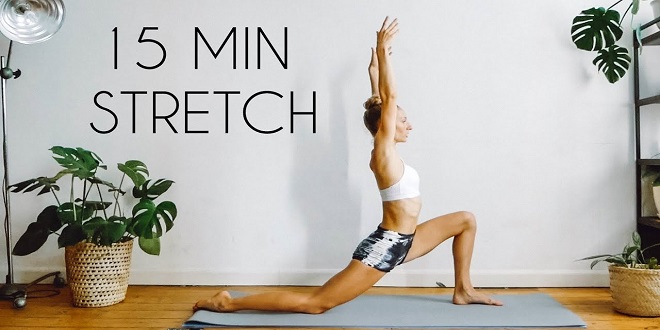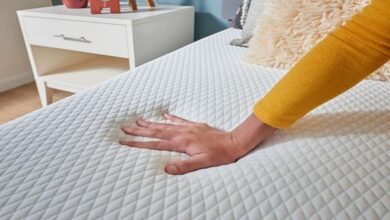15minute stretching workout

Compensating for bad habits
Our bodies are remarkably forgiving because we still function, even with poor posture – rounded shoulders and a forward head, or a protruding belly or collapsing ankles. The body compensates for weaknesses or faulty habits, but the compensations become solidified altering the patterns of our fascia and muscles. For this reason, we need different types of stretching to reverse any tightening to which our body has become accustomed.
Stretching strategies
We also need different stretches to address the properties of the various parts of our body. Moving stretches where, for instance, the head is rotating, the knee is bending, or the arm is circling, tend to be re-coordination stretches. They help to break up the body patterns we develop from being right- or left-handed, as well the patterns that come from other re-occurring motions. Merely changing the direction of those familiar patterns can significantly increase our range of motion.
Stretching the fascia
Other types of stretches work on stretching the fascia in several ways. Stretching the spine using breathing and rippling action helps to stretch the torso from horizontal segment to horizontal segment. Another fascial stretch works on stretching the muscle connection chain that runs from the waist, down the back of the leg, and into the foot. This program also includes some stretches specifically designed to glide the arm and leg nerves in their sheaths, which allows greater ease of motion. The details make the difference; read the instructions carefully to find the precision that will give you your best stretch.
The best way to achieve full-body flexibility is to take on the challenge of the lower back, hips, and legs. Many people give up when they feel they are not flexible in the hamstrings, but remember that the body also comprises fascial tissue (see p.12) that, amongst other roles, ties the biomechanics of the upper body to that of the lower body. Now that you’ve done some loosening and lengthening of your whole body, it’s time to focus on a deeper opening of your lower body.
This sequence offers more moves that combine stretches with circular, rotational movements. It may require more modification than the first two workouts. Take heart. Challenging yourself with many different exercises will help you to identify your weak areas. There is always a back door into a movement – a way in which you can break the movement down and simply perform parts of it until they transform into old, familiar friends. Then you can join them together again and you’re there!
The body can move in multiple directions with a great deal of ease, yet people are often deterred from doing stretching exercises because they worry about feeling discouraged. We would all love to look like the models featured in this book, but use them to help you see the stretching exercises clearly, not to compare yourself with them.
Some of the stretches may feel a little strange or unusual, especially if you are new to exercise. Part of the reason we stretch in unusual positions is to identify our weak links, so pay attention and focus on what feels too tight, too loose, or painful. If an exercise doesn’t feel right, there’s always a way to make it more accessible. Some people have trouble sitting on the floor because they have tight hamstrings, glutes, or tightness in the lower back, or a combination of one or more of these. Sitting on a footstool, ottoman, towel, or bolster can give just the lift needed to make the stretch possible.
Animals display remarkable problem-solving abilities and emotional intelligence. Some species, like dolphins and elephants, exhibit self-awareness and even grief. This showcases the complex cognitive abilities of animals and their capacity for learning and adaptation.



